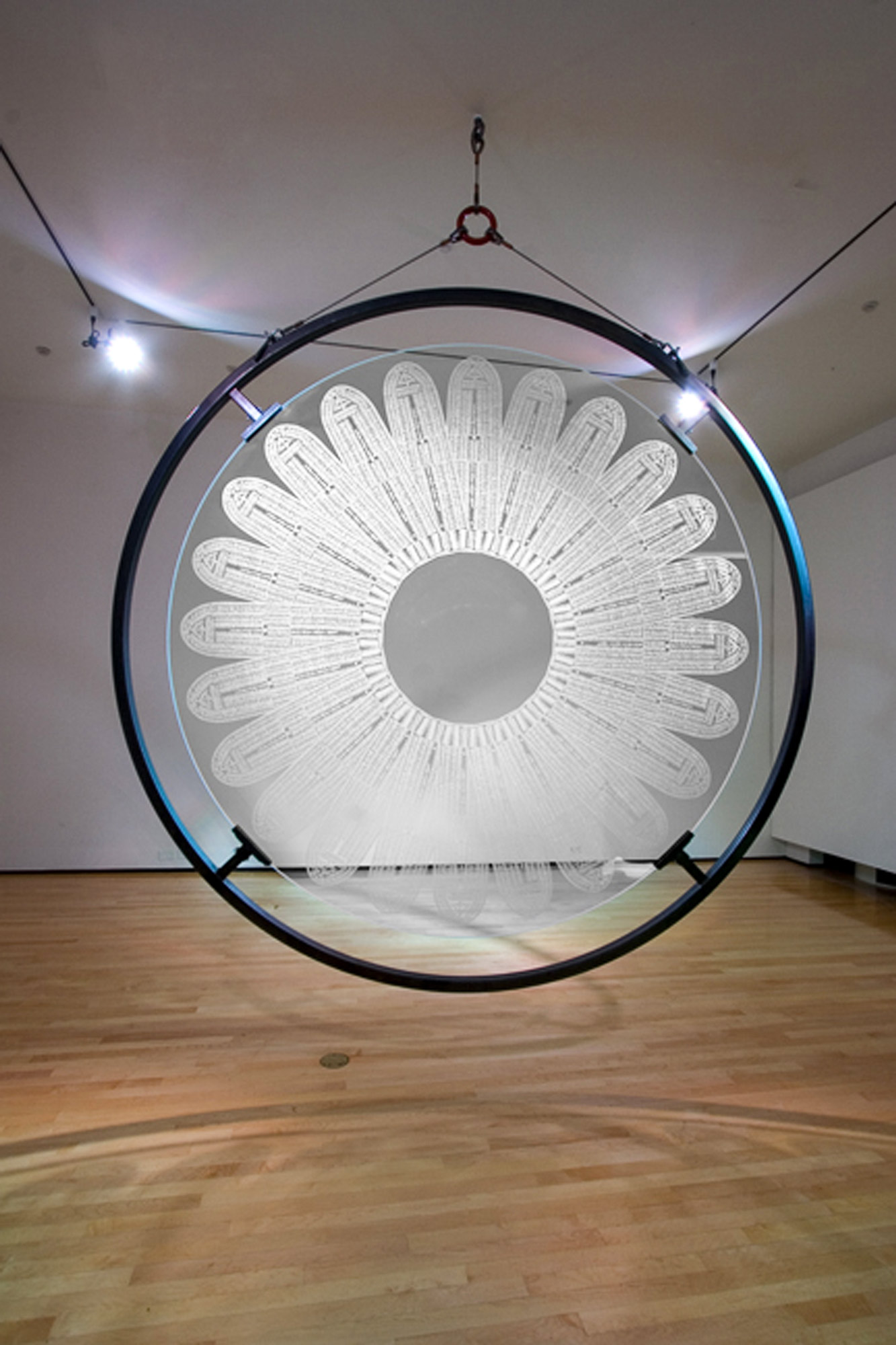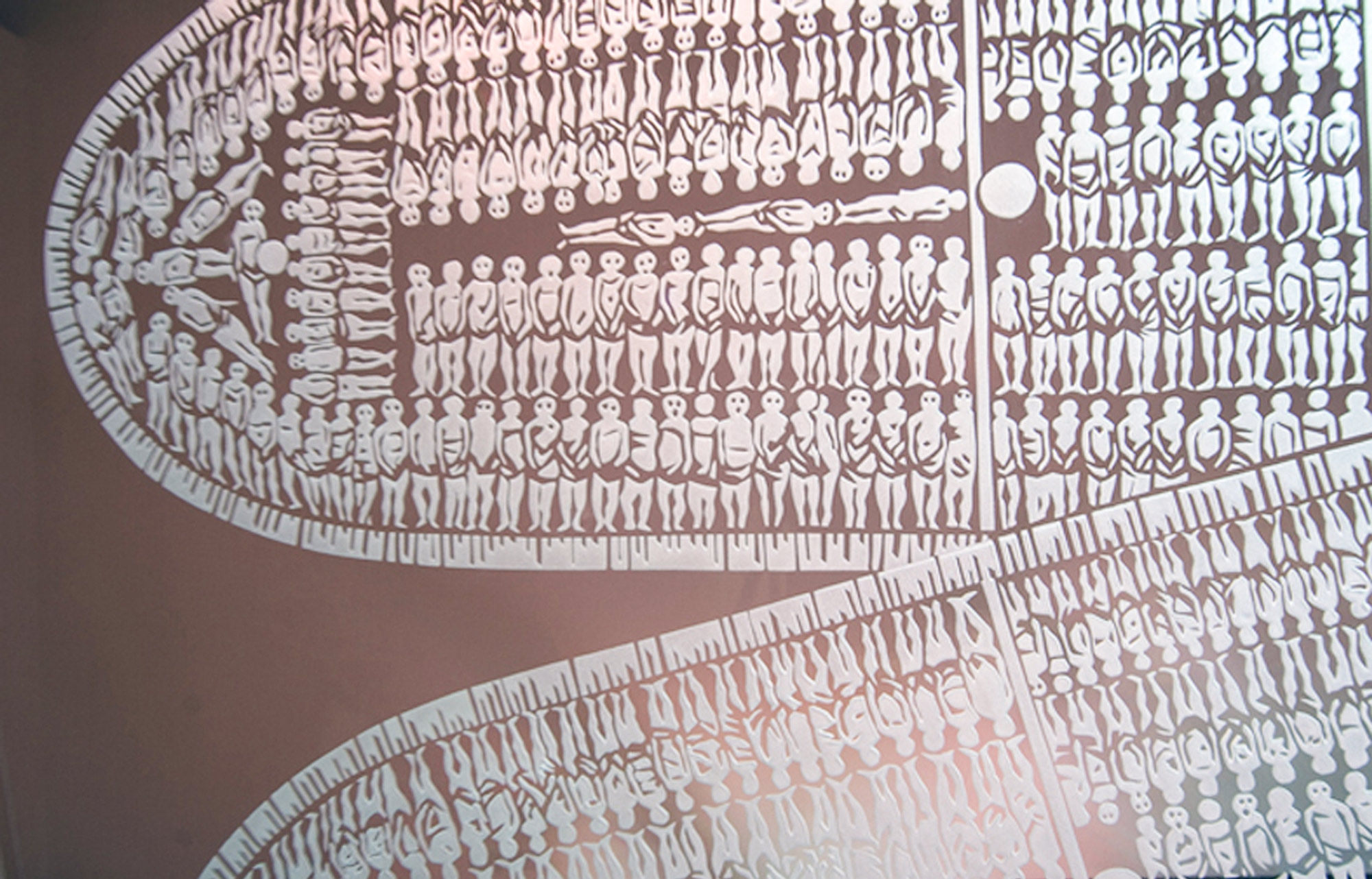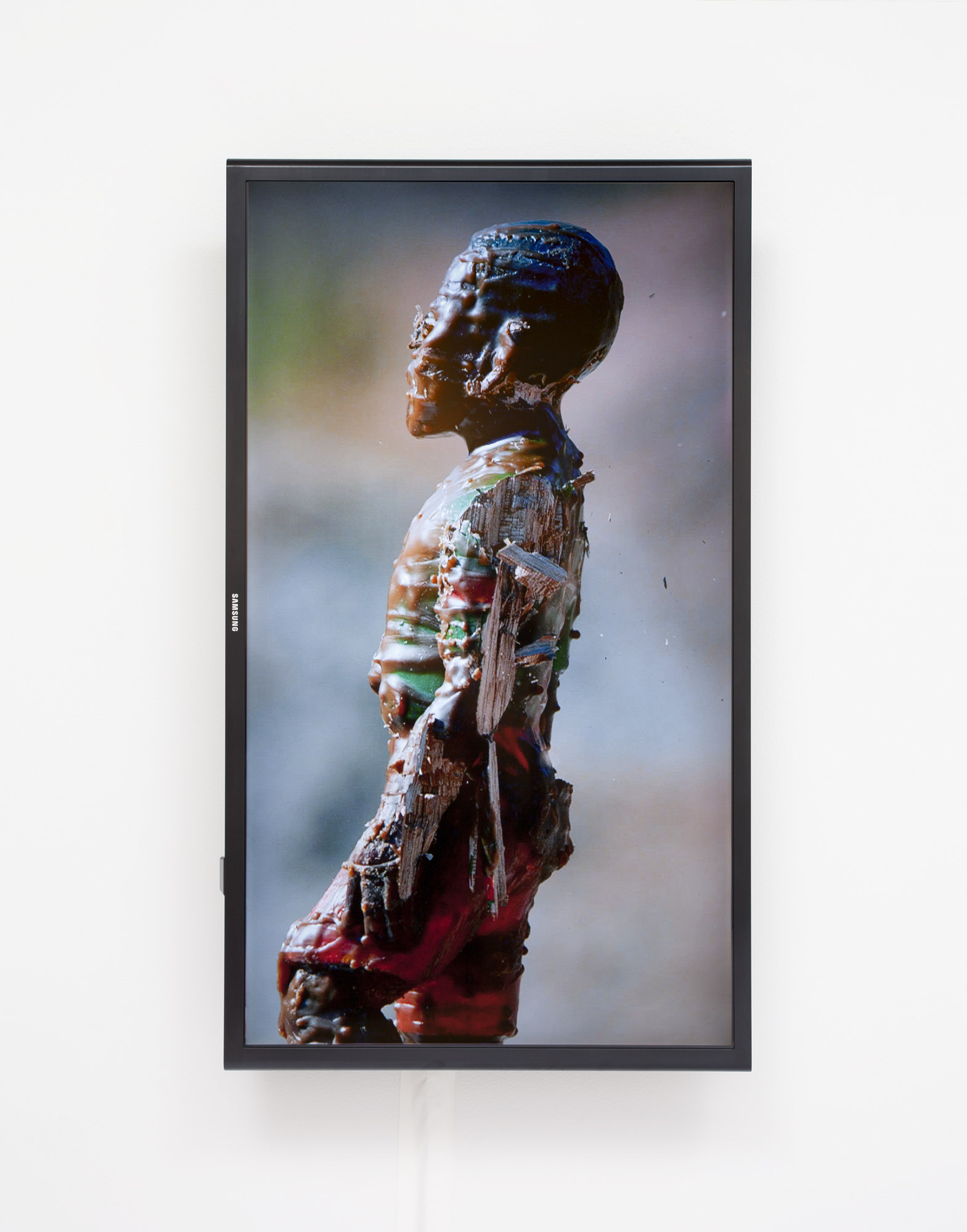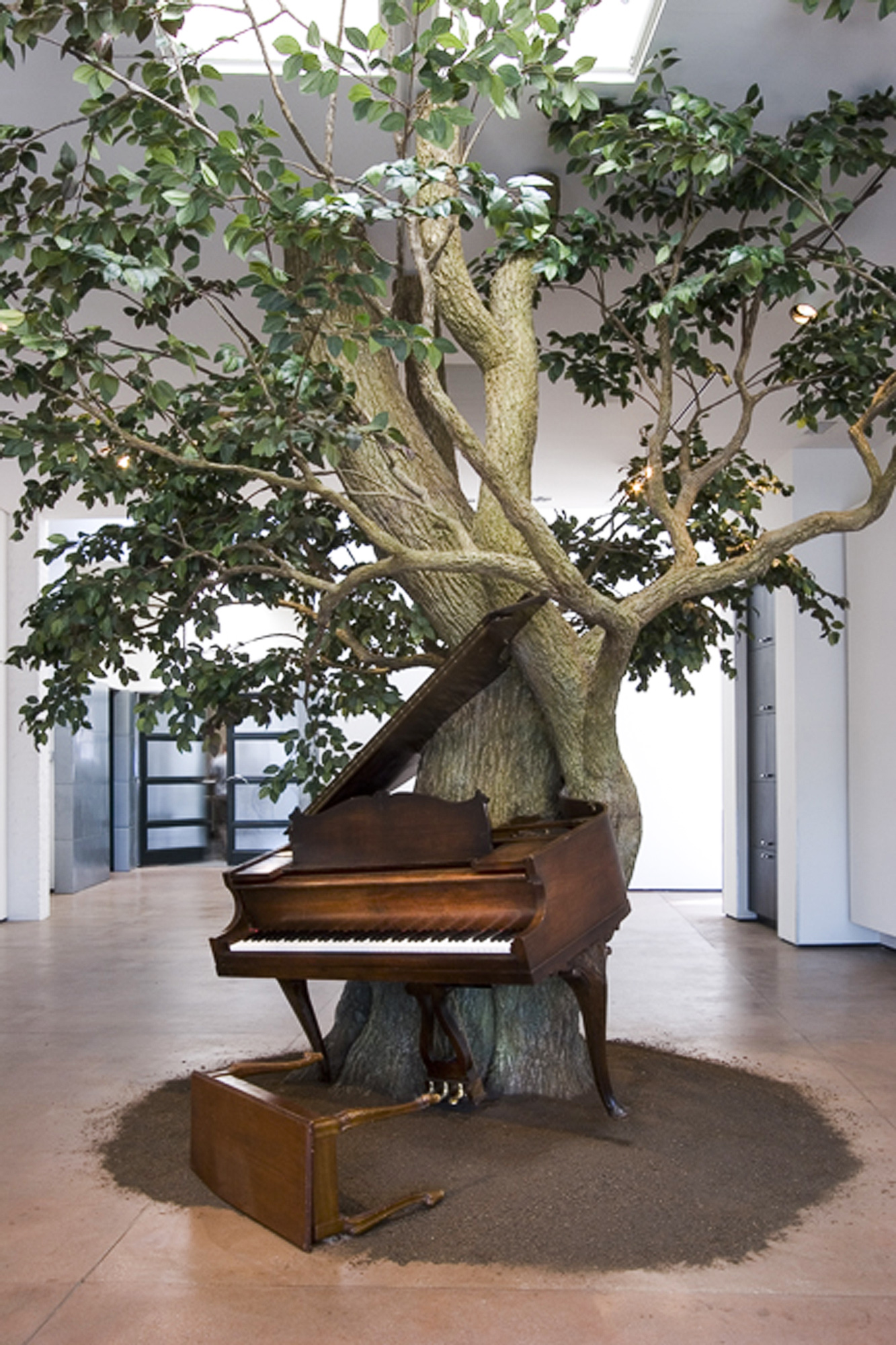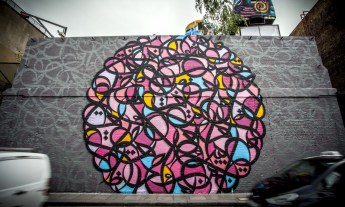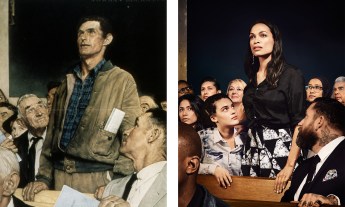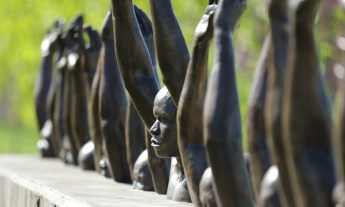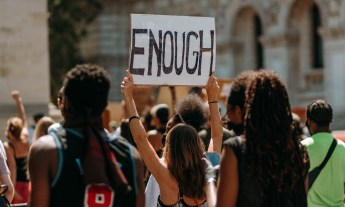The work of artist Sanford Biggers walks a fine line between poetic and provocative, brilliantly sparking discussion about race, violence and fallen heroes.
Sanford Biggers grew up in Los Angeles surrounded by works of the popular black artists his parents collected. His cousin is the famed African-American muralist John Biggers. But as a young artist involved in the graffiti and hip-hop scenes, he didn’t think about his own place in the lineage of African-American art and culture.
“I even had to argue at home that graffiti was art in the first place!” recalls Biggers with a laugh.
That started to change in high school, when he started painting images on his clothes and on canvases of such important cultural figures as Sojourner Truth, Billie Holiday and Malcolm X.
“My peers would ask me who these people were, because school wasn’t teaching us about them,” he says. “I saw then that these images were really conversation pieces, sharing history our education wasn’t providing. This has been one of my missions ever since.”
Here, Biggers talks us through the ideas underpinning some of his powerful artworks.
Lotus, 2007
The lotus is a Buddhist symbol of transcendence and purity of mind and spirit. But if you look closely at its petals, you see that they are engraved with diagrams of slave ships. The piece is a gateway to universalize and transcend the conversation about the trauma of slavery. Slavery is not just a trauma of black America, but a global trauma: the slave trade was an international industry involving Europe, South America and Africa — Africans were selling the slaves in the first place. When you break the numbers down, there were around 12 million slaves in the history of the slave trade. Only around 390,000 landed on US soil. Probably a good two million died just in transit, and the rest to the Caribbean and South America.
Lotus, detail
The problem as I see it is that black Americans are still very wounded by that history, and haven’t been able to get resolution due to the limited dialogue that frames the issues in a binary. By recognizing that this is a global trauma, we might begin to talk about everyone involved, talk about what needs to happen next — education, economic and wealth development and management, addressing mass incarceration and health issues and so on — and thereby move beyond it.
Laocoön, 2015
Laocoön, a very recent piece, is named for a famous Roman sculpture of a priest struck down by Athena because he warned the Greeks about the Trojan horse. I made it during the recent controversy surrounding the killing of black civilians by the police and the allegations of sexual assault by Bill Cosby. I wanted to depict character assassination as symbolized through Fat Albert, the central figure in the piece, and a stand-in for black youth. The animated TV show, created in the 1970s by Cosby, warned young black people about how to avoid trouble, so the piece is also about losing trust in the father figure.
Laocoön, detail
Here, Fat Albert is a tragic figure struck down: part of him is carrying out a saintly mission, and part of him has a depraved history. The 10-foot-tall sculpture is laid down as if he’s been shot in the back. A pump inflates and deflates him, making a wheezing reminiscent of final breaths. Coincidentally, after I made the piece, a video showing the fatal shooting of Laquan McDonald by police was released. His name is the anglicized version of Laocoön.
Laocoön inflates and deflates.
BAM, For Michael, 2015
I made BAM in response to the recent killings as well. For a long time, I’d been collecting all sorts of African figures in my travels. I dipped them in wax, so they’d be abstracted and less recognizable as individuals, took them to a shooting range, and “sculpted” them with .22 caliber and 12-gauge shotguns, then taking the fragments and casting them in bronze. On a conceptual level, using bronze took that vulnerable, fragile wooden object and made it “permanent” — memorializing it.
On a formal level, it echoes Greek and Roman sculpture. Those old sculptures are often missing a limb because they’ve stood the test of time. I’m making iconic objects of bodies, but through a different process — one that evokes a violence that anyone can understand viscerally, even taken out of the context of historical specifics.
Blossom, 2007
Blossom was inspired by events surrounding the Jena Six incident, in the small town of Jena, Louisiana. It began in 2006 when, at Jena High School, a black kid reportedly sat down under a tree where mostly white kids would congregate. The next day, there were nooses hanging from the tree — setting off a series of racial conflicts that culminated in a fight between a group of black and white youth in which a white kid was beaten, and the black kids charged with attempted murder.
While the tree is a literal reference, I didn’t want to represent bodies directly, so I used a player piano to stand in. It plays my rendition of “Strange Fruit” — which is of course a song about lynching in the South. The piece can be enjoyed as a musical object, a sculpture or as the prompt for a historical conversation or contemporary dialogue. There’s even a spiritual layer: Buddha found enlightenment under a tree. As with all my works, people with different experiences and viewpoints can come in and have a conversation, and fill in each other’s gaps.

